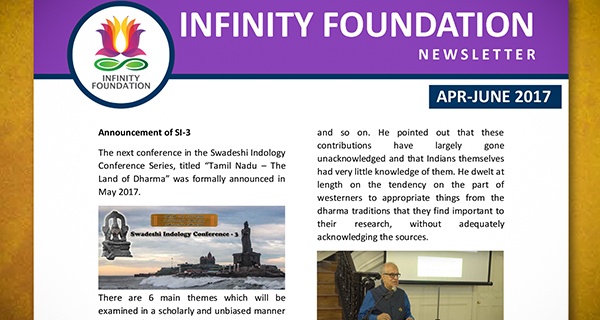Auroville
Auroville is a place where all human beings of goodwill that have a sincere aspiration could freely live as citizens of the world and obey one single authority, that of the supreme truth. It is a place of peace where you can conquer the causes of your sufferings and miseries, surmount your weakness and ignorance, to triumph your limitations and incapacities. It is a place where the needs of the spirit and the concerns for progress take precedence over the satisfaction of desires and passions, and the search for pleasure and material enjoyment. All who thirst for progress and aspire to a higher and truer life are invited to Auroville.
Auroville is an international township located in South India. It was inaugurated in 1968 by Mother Auroville. Auroville is an experiment in human unity based on the vision and teachings of Sri Aurobindo and the Mother. At present 1,300 inhabitants from 30 nations participate in very diverse activities ranging from greenwork to rural development to alternative technology to education. The city of Auroville is divided into four zones – cultural, industrial, international and residential. These zones represent the four essential activities of man in society; culture and education, work and administration, unity and diversity and residence. The international zone – is where the countries of the world are invited to build a pavilion representing their specific culture. Adjacent to the city proper there will be Public Service (Post Office, bank, public transportation etc.) and staff housing. The city will be surrounded by a green belt with the following purposes:
- To develop farms, dairies, poultry’s etc. to produce foods for the residents of Auroville.
- To act as a living interface with the “outside world.”
- To serve as a field for practical research and experimentation in environmental rural regeneration.
- To create a healthy micro-climate in the bioregion.
Auroville’s vision statement is: “Auroville, the city the Earth needs, will be the hub of a thriving bioregion in which people of the surrounding villages will share in the material, cultural, and spiritual wealth of Auroville.”
Goals and objectives of Auroville are to see that the villages in the bioregion will have a dynamic and neighborly link with Auroville, creating a vibrant flourishing bioregion over the next decades.
The Infinity Foundation decided to support a unit of Auroville called the Auroville Action Group. (AVAG) because of its many projects that assist many neighboring villages and their citizens.
In 1983 Auroville Village Action Group (AVAG) was inaugurated to assist the neighboring villages. It began getting project grants in support of its work of stimulating and supporting community organization and development in the villages around the international Township Project of Auroville.
AVAG is involved in the many areas listed below:
- The Auroville Village Action Group (AVAG) will help the villagers to form citizen groups, which will take up village improvement.
- Village groups will collaborate with various NGOs and voluntary agencies to take up many and various projects for village development – health, environment and cultural.
- AVAG will help villagers and teachers to improve the schools of the area.
- AVAG will run schools in Auroville and create new educational materials for use in its training and educational programs.
- AVAG will document and disseminate its development materials.
The work of AVAG is based on programs that are educational, provide opportunities for children, women, youth and elders. AVAG has been working toward its objectives and is presently in touch with 35 villages with a population of about 30,000. About 80 local villagers have been trained by AVAG as development workers and teachers. The AVAG development work team members has stimulated their neighbors to form development clubs. Twenty-nine youth clubs, 22 women’s clubs, 6 Village Councils and 9 Parent-Teacher Associations meet regularly to take action for village self-improvement, and also send representatives to regular area-wide meetings. Today villagers are successfully availing of government programs, and projects offered by other NGOs in health environmental regeneration and women’s development. Today 21 village schools welcome AVAG teachers into their classrooms with innovative methods and materials.
Additional village outreach and educational projects spear-headed by AVAG are:
- Microproject Fund is for village projects, and is the chief tool of the people’s participation approach of AVAG. Groups can apply for Microproject grants only if no other source for funding is available. They must cover 35% of the cost themselves, and include a plan for maintenance of the project. Microprojects can range from deepening a well, to leveling a road, to whitewashing the village school. The result of the Microproject is that not only is the material improvement achieved, but also the group becomes confident and ready to take up more projects for village improvement.
- Seminars, meetings etc: refers to informational activities in the villages for village groups either to present topics, bring groups together, or celebrate some bioregional theme.
- Education: There are 23 night schools where children get help with their homework, or non-school-going children get basic literacy education. Each school is run by a local educated youth, which receives a small stipend for his two hours of work six evenings a week.
- Isai Ambalam School is for dropouts from the regular schools of 5 villages. It develops innovative educational materials for use in pre-schools and primary schools. Teacher’s salaries and basic expenses are required.
- Life Education Center is for girls who learn typing, tailoring, needlework, and cooking, with remedial work in literacy, and orientation toward women’s role in society. The salary of the headmistress, and a small stipend for the students (so that their parents will allow them to attend, as they are “earning”) as well as a daily snack is provided. Most of the expenses are covered by the sale of the students production, the organization of which is also part of the vocational training,



